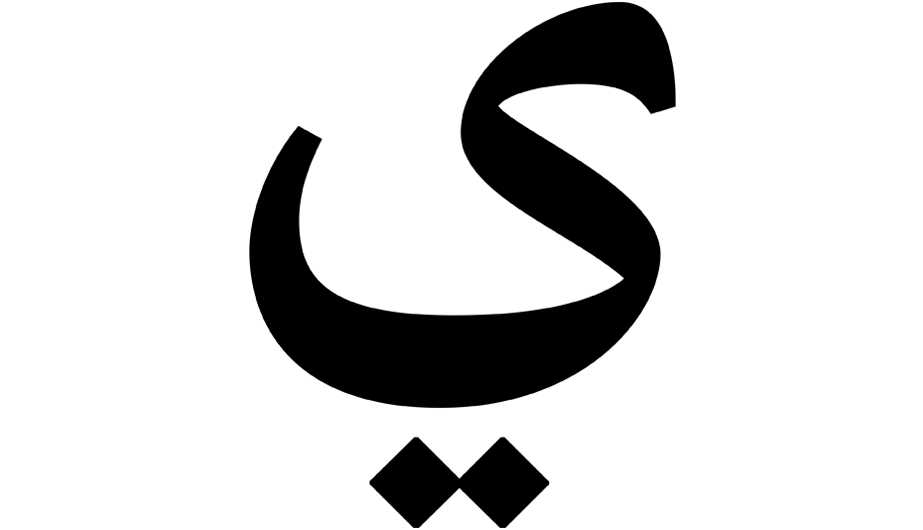
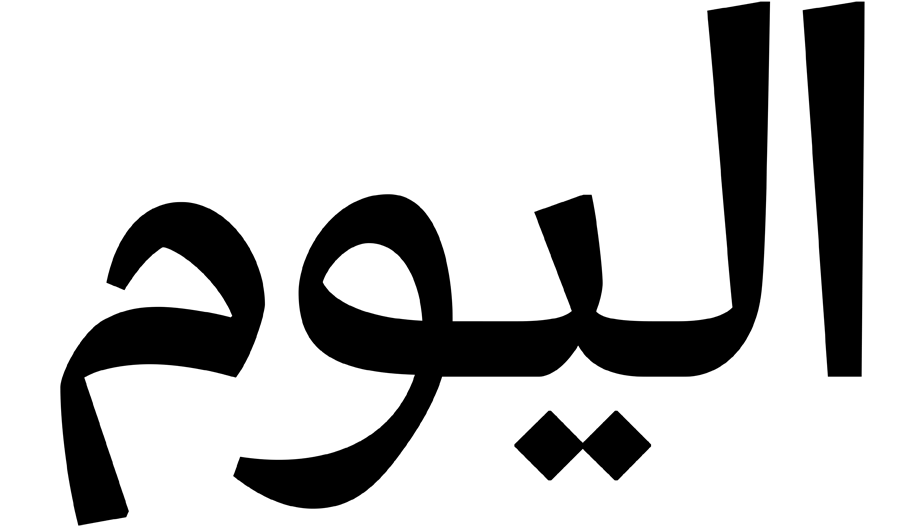
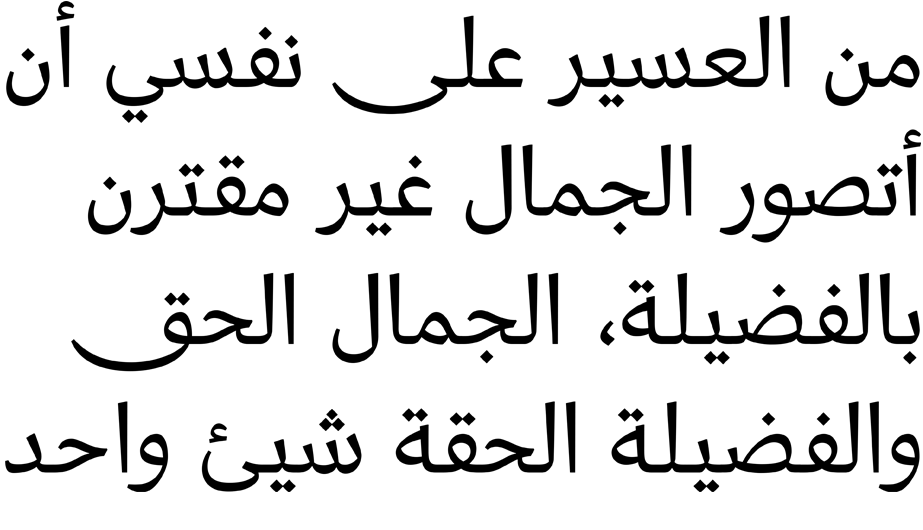
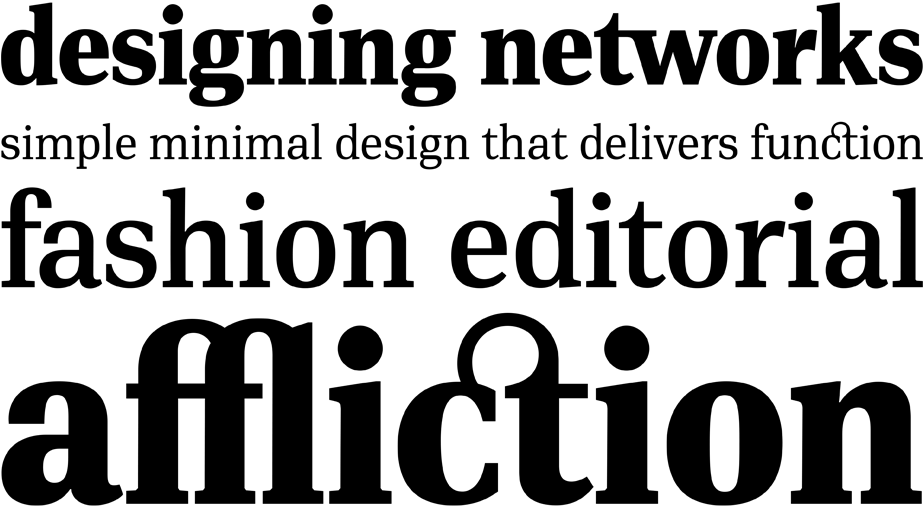
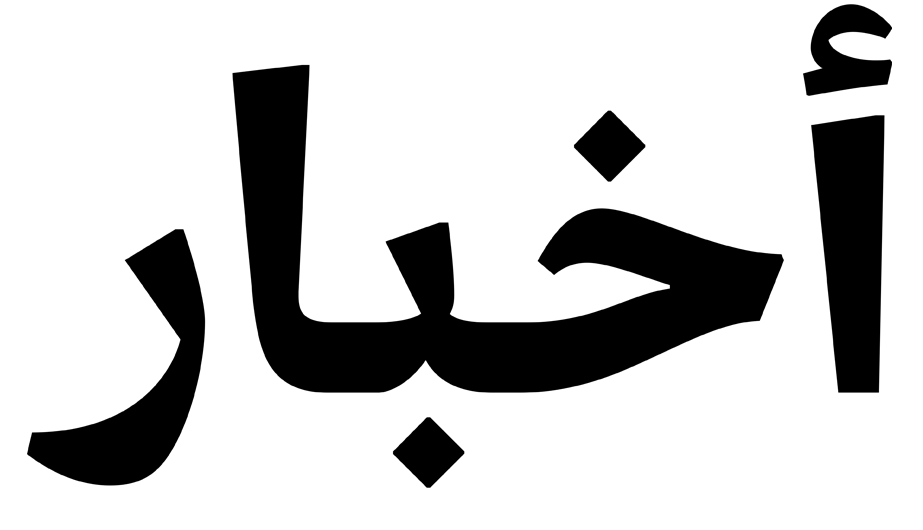
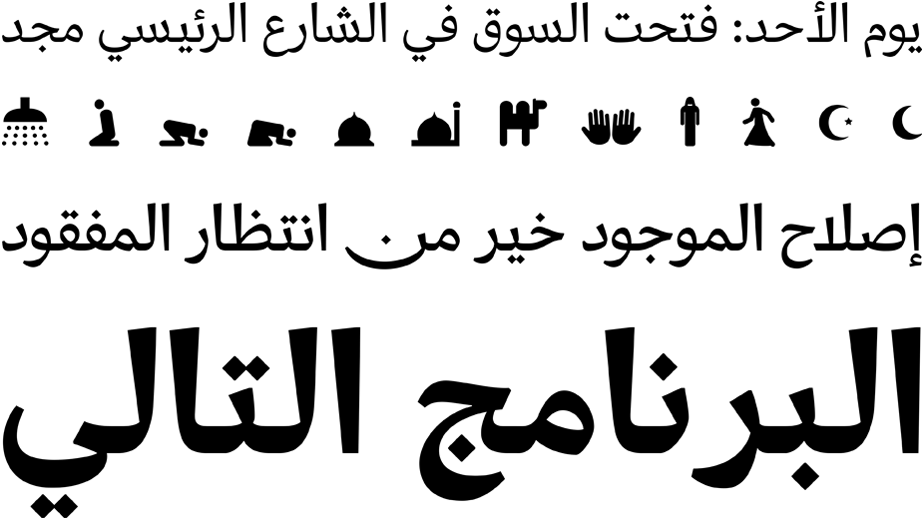
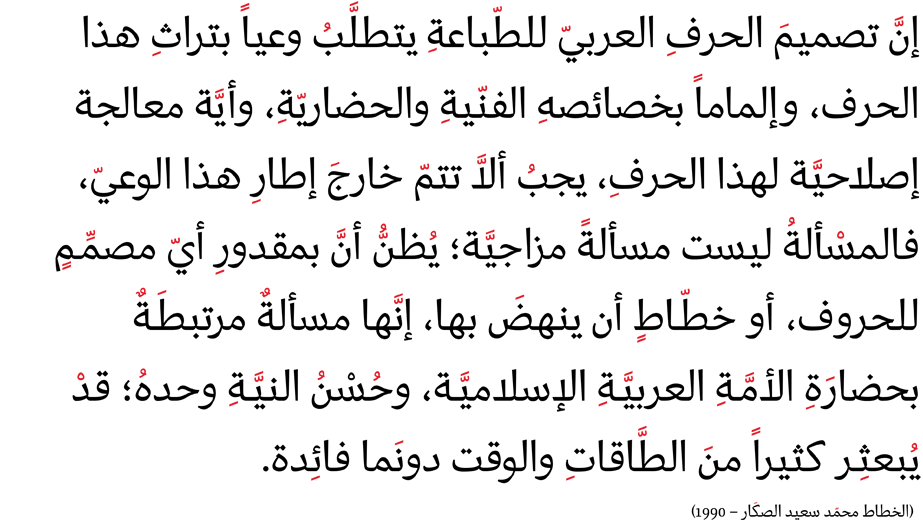
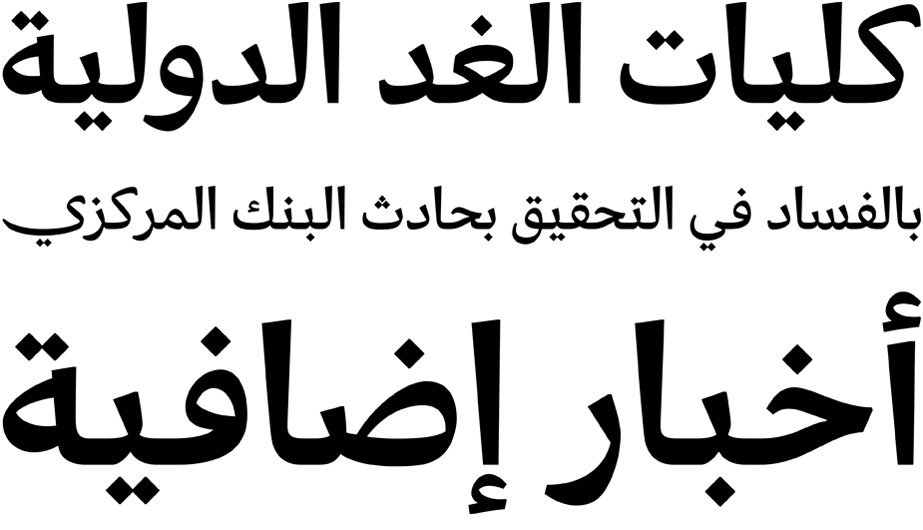
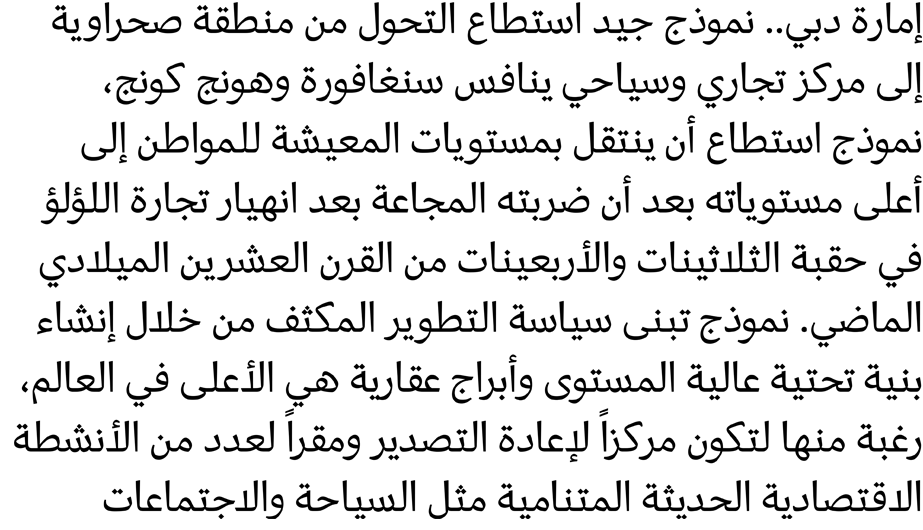
Specimen
Test Driver
DIN Serif Arabic
DIN Serif was originally designed as a low contrast typeface with functional and distinct novelties which set it apart from most classic romans. Its solid, simple and subtle serif nature directed the development of its Arabic counterpart away from the traditional calligraphic styles.
€345.00 complete family
DIN Serif® Arabic
Copyright ©2017
Designer: Panos Vassiliou /Hasan Abu Afash
DIN Serif was originally designed as a low contrast typeface with functional and distinct novelties which set it apart from most classic romans. Its solid, simple and subtle serif nature directed the development of its Arabic counterpart away from the traditional calligraphic styles, towards a more simplified contemporary design mixing Naskh characteristics with early Kufi style. Its Arabic letterforms carry through the feel of the original design by using attributes of DIN Serif such as the tension and contrast without copying the curves of the Latin script in its entirety. In fact, several basic characters originated on paper after many tedious trials with a traditional calligraphic bamboo pen. This provided a deeper understanding of its structure and visual rhythm, before converting the letterforms into a digital form and applying additional adjustments.The descenders of DIN Serif Arabic are short to match the proportions of the Latin version. The contrast between the thick and thin is maintained although inverted. Finally, it has carefully designed open counters that match the colour of the original. DIN Serif Arabic is fresh, clean, reliable and quite legible. Therefore, it is highly recommended for newspapers, magazines and other printed matter.
This version takes into consideration the new Unicode standard and supports additional languages such as Persian, Tajik, Kurdish Sorani, Kurdish Kirmanji, Pashtu, Baluchi, Urdu, Punjabi, Azeri, Kazakh, Tatar, Uighu.
Furthermore, each font style includes several Arabic practical symbols as well as swashes. All weights from Regular to Extra Black were meticulously hinted for excellent display performance on the web.
Replaces isolated forms of all Arabic letters to their required initial forms.
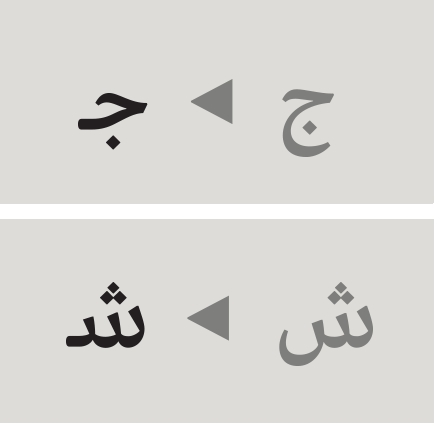
This feature changes isolated forms of Arabic heh to another isolated form.
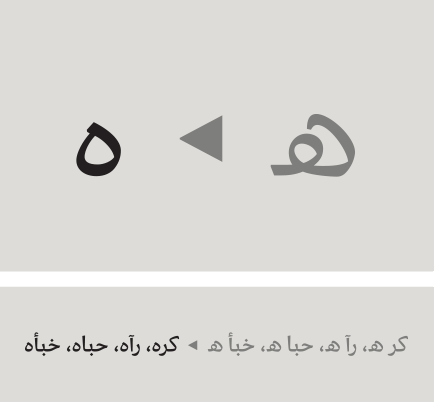
Replaces a sequence of glyphs with a single glyph, creating a professional-looking text with no peculiar collisions among letters. It covers the standard f-ligatures, as well as few other ones used in normal conditions. This feature also covers Arabic Beh Reh, Beh Noon, Beh Yeh ligatures as well as some words required for the Arabic script.
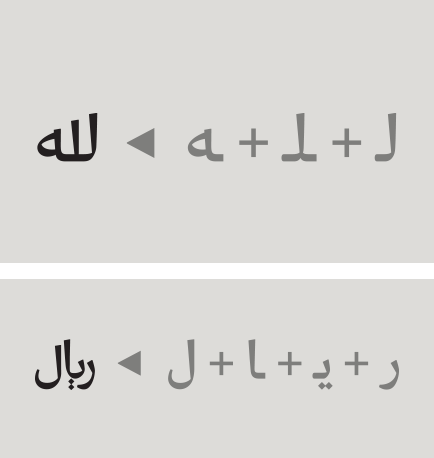
This feature positions mark glyphs above and below base Arabic glyphs in accurate position.
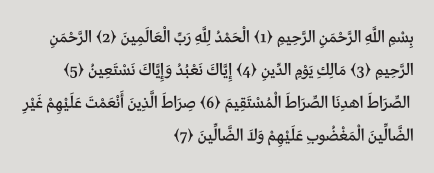
This feature changes isolated forms of all Arabic letters correspodingly to their required medial forms.
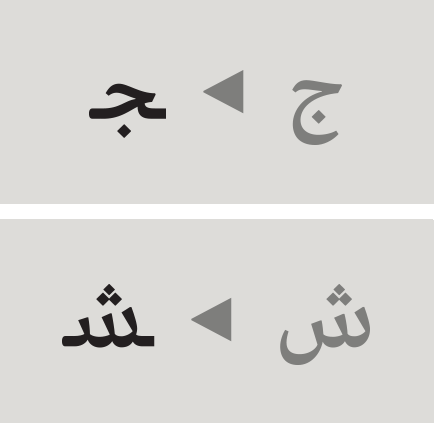
Replaces a sequence of glyphs with a single glyph. This feature covers those Arabic ligatures which are required to be used in normal conditions. Such a ligature is LamAlif which is always formed when Lam is followed by Alif.
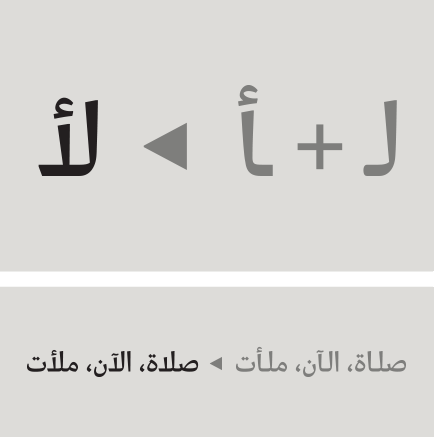
Ornaments/Various Symbols : This feature may replace the bullet or other characters with any of the available ornaments/symbols. All of them are best accessed from the program’s ‘Glyphs Palette’ when available. There is a total of 100 ornaments/symbols included for packaging, public areas, environment, transportation, computers, fabric care, urban life.
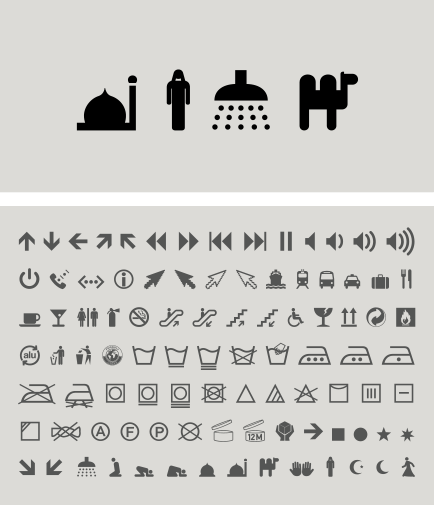
This feature changes isolated forms of all Arabic letters to their required final forms.
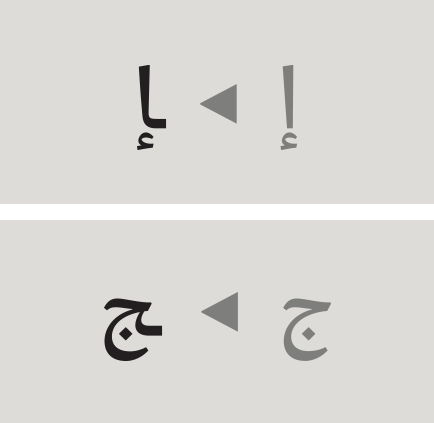
SCRIPTS
1252 Latin 1 , 1256 ArabicSUPPORTED LANGUAGES
Afrikaans, Alsatian, Basque, Bislama, Breton, Catalan, Chamorro, Danish, Dutch, English, Faroese, Finnish, Flemish, Franco-Provencal, French, Frisian, Friulian, Galician, German, Greenlandic, Icelandic, Indonesian, Irish, Italian, Ladin, Latin, Luxembourgish, Malay, ManxGaelic, Norwegian (Bokmål), Norwegian (Nynorsk), Occitan, Portuguese, Rhaeto-Romance, Romansh, Sami (Inari), Sami (Lule), Sami (Skolt), Sami (Southern), ScottishGaelic, Spanish, Swahili, Swedish, Tagalog, Walloon, Welsh, Arabic, Farsi (Persian), Pashto, UrduNAME
PF DIN Serif ArabicFORMAT
OpenType PSPACKAGE
Family of 5 fonts (also available as separate weights)GLYPHS
1589 glyphs/font
PRO FEATURES
Standard Ligatures, Required Ligatures, Discretionary Ligatures, Fractions, Ornaments/various symbols, Superscript, Mark Positioning, Mark to mark Positioning, Isolated Forms, Contextual Alternates, Initial Forms, Medial Forms, Terminal Forms, Swashes, Glyph Composition/Decomposition.
PRICE
family: €345.00
single weight: €75.00